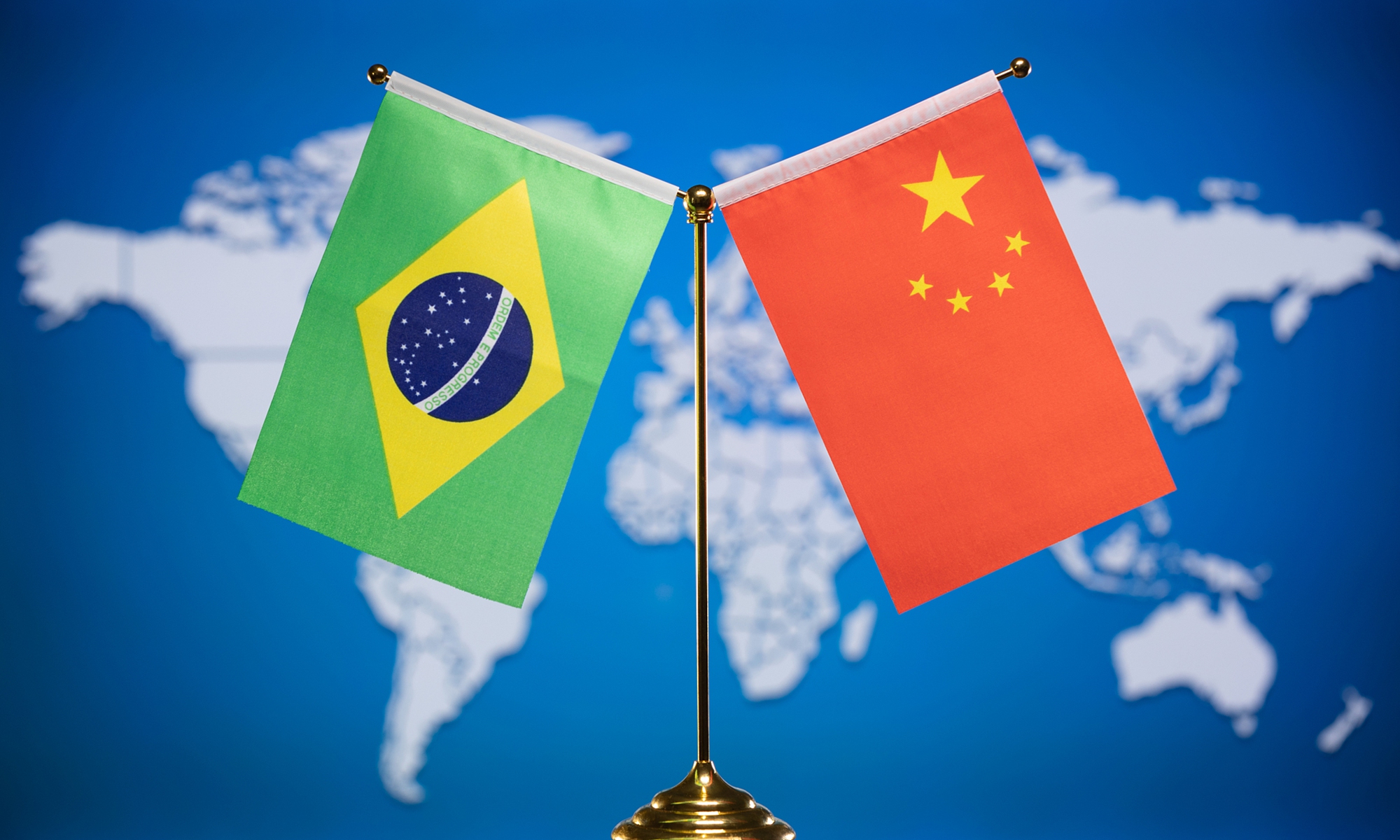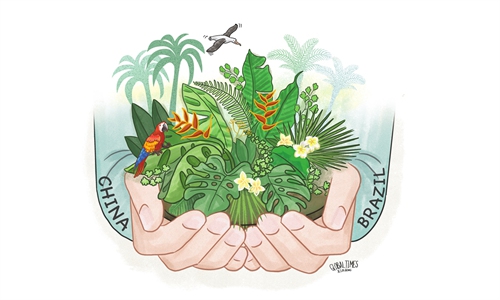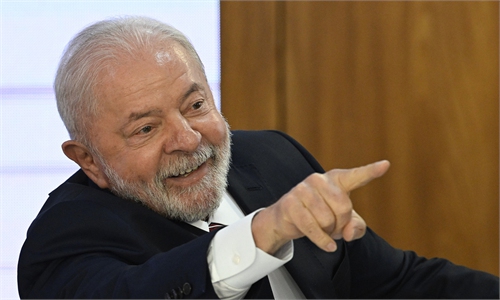
China and Brazil. Photo: VCG
After a last-minute postponement due to health issues, Brazilian President Luiz Inácio Lula da Silva is finally visiting China this week. The meeting between President Lula and Chinese President Xi Jinping is highly anticipated around the world, given the economic and geopolitical importance of both countries.China has been Brazil's largest trading partner since 2009 and its bilateral trade reached a record $150 billion in 2022. Both countries have just announced a new agreement to facilitate trade and investments in local currencies, which is regarded - including by the US government - as an important blow to the hegemony of the dollar. President Lula faces numerous challenges at the beginning of his term, but cooperation with China can be strategic for Brazil to help the country confront at least three major challenges.
The first challenge is the eradication of hunger and extreme poverty, which has once again plagued the Brazilian population. After being removed from the UN World Hunger Map in 2014, thanks to the Workers' Party's (PT), 33 million Brazilians fell back into hunger during the course of the Bolsonaro government. Today, about 120 million suffer from some type of food insecurity. China has accumulated enormous knowledge of public policies in this sector that Brazilians have a lot to learn from, notably its targeted poverty alleviation program, which lifted almost 100 million people out of poverty in the past five years.
On the other hand, Brazil needs to strengthen the productivity of its small-scale farming, which accounts for 70 percent of the food consumed in the country and is strategic for fighting hunger and generating income. The Lula government will need to formulate public policies in order to stimulate the sector and facilitate access of farmers to machinery, both by importing it from China or by installing Chinese factories in Brazil. Together with other elements, such as bio-inputs (substituting agro-toxins) and small-scale solar energy, these could represent a revolution in the productivity of Brazilian family agriculture.
The second challenge is to reindustrialize the country's economy, using technology transfer, while taking into account the environment and the climate crisis. This is being called "neoindustrialization" by the Brazilian government. No other country has the combined financial, industrial, and technological conditions as China does to cooperate with Brazil in this area. There are numerous promising sectors, such as electric vehicles, information technology, 5G, renewable energy, aerospace, biomedicine, and semiconductors, etc. Some agreements related to these sectors should also be signed during Lula's visit, but there are some challenges to be overcome, especially regarding the nature of Chinese investments in Brazil.
Between 2005 and 2021, Brazil was the fourth largest global recipient of Chinese investments. But from 2007 to 2021, 76.4 percent of the investments were concentrated in the energy sector (electricity and oil and gas extraction), while only 5.5 percent went to manufacturing and 4.5 percent to infrastructure, which is the country's greatest need. It's up to the Brazilian government to propose partnerships in these areas that support a reindustrialization project. It would be important for Brazil to propose the creation of more China-Brazil joint ventures in some of the strategic sectors for the Latin American country. Between 2005 and 2020, joint ventures received only 6 percent of Chinese investments, while mergers and acquisitions received 70 percent. It is important to remember that Chinese joint ventures with US and European companies, many involving technology transfer, have been one of the secrets of China's successful development in recent decades.
The third challenge is the resumption of Brazil's driving role on the geopolitical stage, with its sovereign foreign policy that marked the Workers' Party governments between 2003 and 2016. On Thursday, Lula visited the new president of the New Development Bank, Dilma Rousseff, for a swearing-in ceremony that was delayed last month. By appointing a senior leader such as Rousseff, Lula is showing the Brazilian government's bet on strengthening BRICS - a strategic instrument of the China-Brazi partnership - as one of the pillars of multipolarity. For a number of factors, both the NDB and the Contingent Reserve Arrangement (CRA) - a $100 billion fund whose original purpose was to be an alternative to the IMF - still fall short of their enormous potential. There is no doubt that one of the weaknesses of the NDB since its inception has been the lack of strong leadership willing to face some challenges. Who better than Rousseff - a highly prestigious global leader and one of the founders of the NDB (2015) when president of Brazil - to take on this task?
In the 1980s, when China was beginning its process of reform and opening-up, it sought to learn from Brazil's industrial development, for example, in the automobile industry, telecommunications, and the most advanced hydroelectric technology at the time at Brazilian Itaipu Power Plant. Hundreds of Chinese engineers, researchers, and government officials visited Brazil over the years to absorb the Brazilian experience and adapt it to Chinese needs. At that time, Brazil's and China's GDPs were similar. Today, China's GDP is more than 10 times bigger than Brazil's. The time has come for Brazil to send its students, officials, and cadres from the most different areas to China, so that it can learn the lessons from the China model of modernization and propose countless forms of cooperation between the two countries.
The author is a researcher at Tricontinental Institute for Social Research, co-editor of Dongsheng Collective, member of No Cold War Campaign. opinion@globaltimes.com.cn


